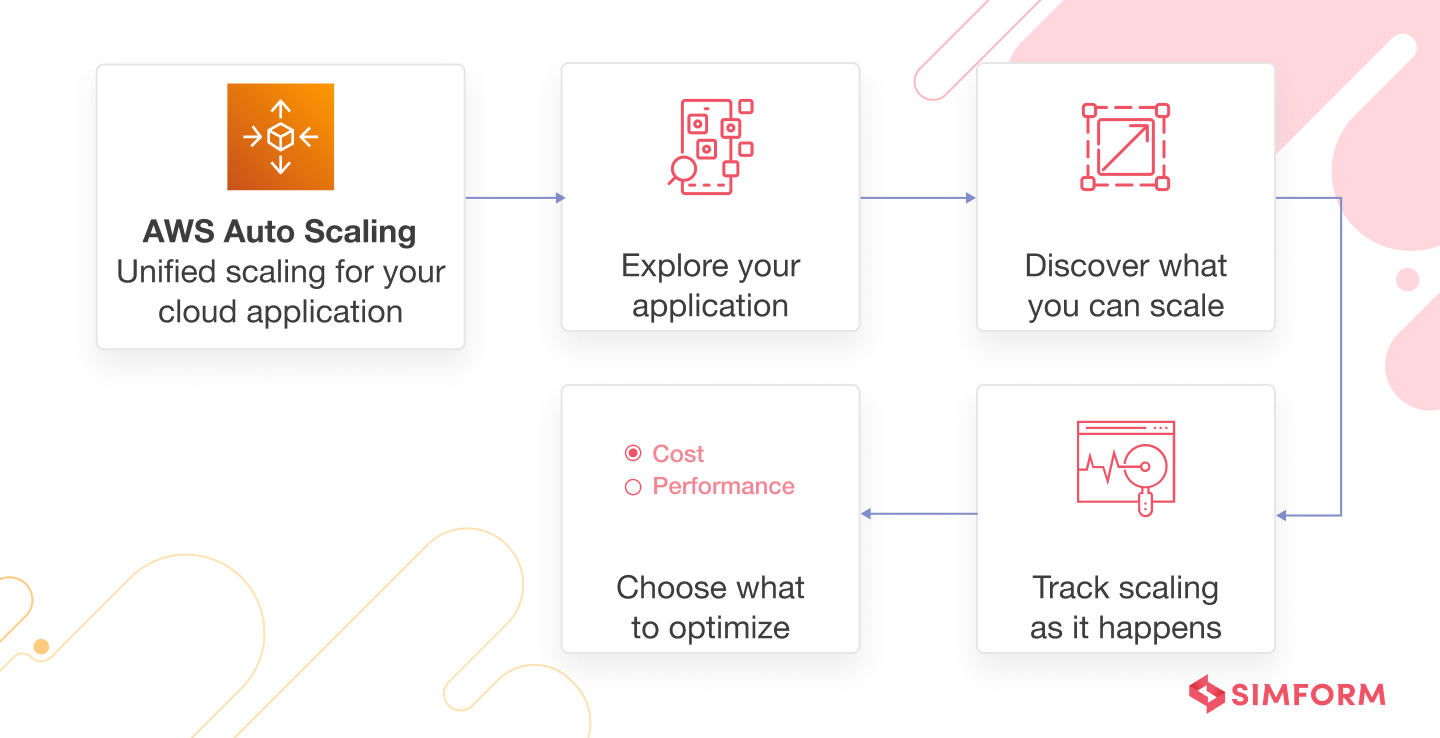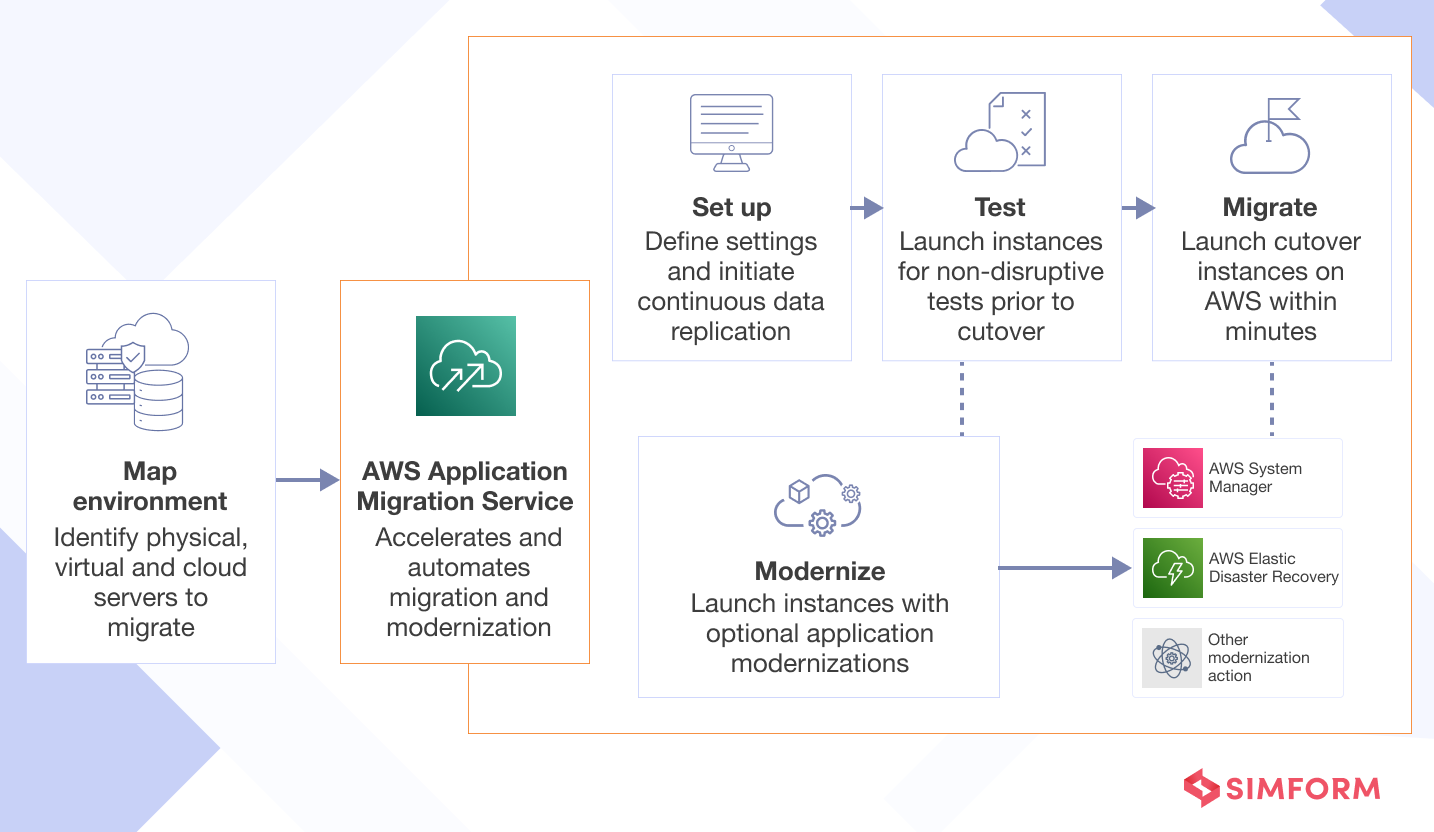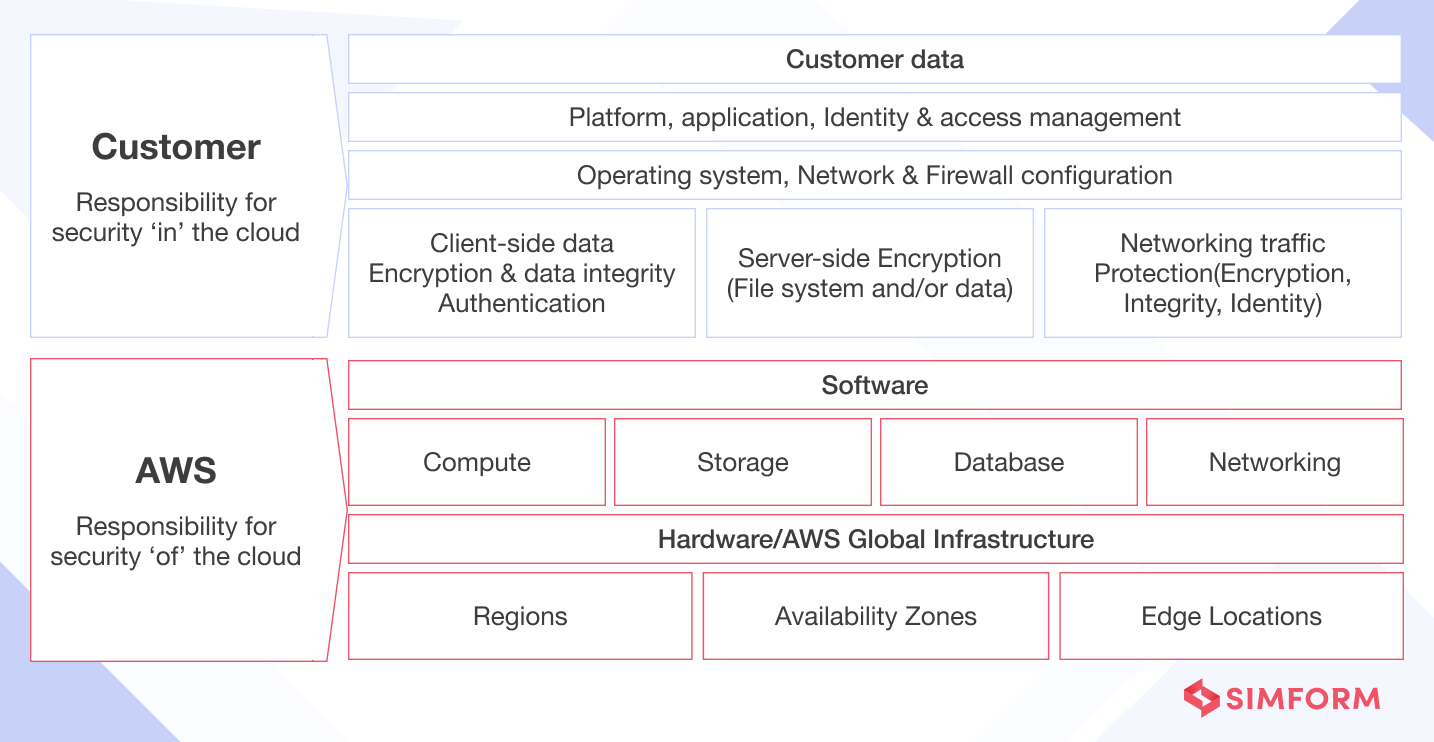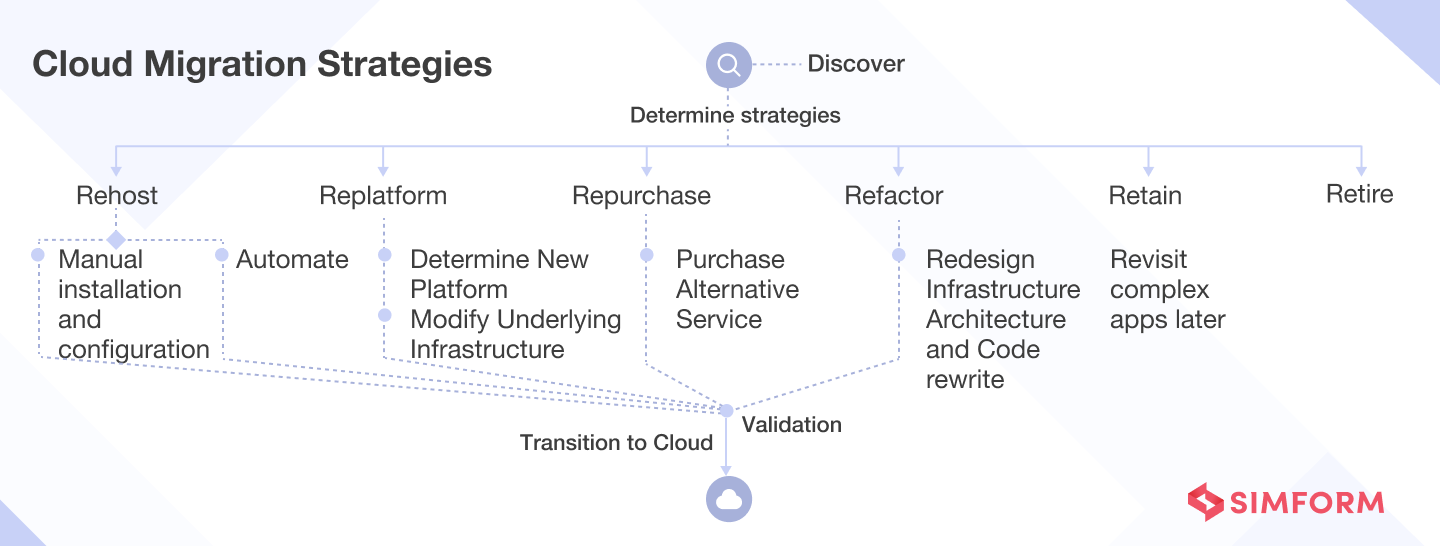Cloud computing has opened up new possibilities for small and medium-sized businesses (SMBs) to expand their reach and tap into a global customer base. And AWS is often their first choice because of its experience in helping organizations of all sizes migrate their workloads to the cloud. Over 71% of SMBs favor AWS over other cloud providers.
However, like any major transition, moving to the AWS cloud presents its own set of challenges. In this blog, we will explore some of the key hurdles faced by SMBs during this migration process and discuss effective solutions to overcome them.
Challenge 1: Cost
While cost savings are a significant benefit of migrating to the AWS cloud, managing cloud costs effectively continues to be the most cited challenge for SMBs. They either end up with high running costs on the cloud or don’t have a clear idea of what it will cost to move to the cloud.
Many factors contribute to this, such as the complexity of cloud pricing models, the dynamic nature of cloud usage, and the lack of experience/expertise in cloud cost management within SMBs. Moreover, cloud expenses escalate quickly without proper monitoring and governance, impacting an SMB’s overall financial health.
Solution:
If done right, moving to the cloud can quickly accumulate savings as businesses reduce capital expenditures and operational costs. SMBs can implement the following strategies to ensure cost-efficient migration and operations in the cloud.
- Leverage AWS Lift
AWS Lift is a program developed specifically to help SMBs harness the power of the cloud. SMB customers who create an account with AWS and bill a min of $1 USD will receive a starter pack of $750 USD AWS Promotional Credits to get on board. As your business grows, you can further receive tiered promotional credits of up to $83,500 USD over 12 months.
- Use AWS Cost Explorer and AWS Budgets
SMBs can leverage these AWS tools to gain visibility into resource usage patterns. It helps identify cost-saving opportunities and establish budgetary controls.
- Implementing auto-scaling
AWS Auto Scaling monitors your applications and automatically adjusts capacity to maintain steady performance at the lowest possible cost. It lets you manage many AWS services, including Amazon EC2, Amazon ECS, Amazon DynamoDB, and more.

- Employ resource optimization practices
To further optimize costs and provide long-term savings, you can implement practices such as rightsizing instances, utilizing reserved instances, downsizing underutilized instances, turning off idle resources, etc. Check out this blog for more AWS cloud cost optimization tips.
- Reduce database storage costs
AWS offers purpose-built database services that are scalable and cost-effective, for instance, DynamoDB. Here’s an example of how DynamoDB can help save costs for SMBs.
In the US, Black Friday sales can cause a significant ramp-up in your application traffic. DynamoDB allows switching between different capacity modes once every 24 hours, depending on traffic. Switch traffic to On-Demand capacity mode during the event to meet the traffic. After the event, switch back to provisioned capacity mode to save costs.
Challenge 2: Resistance to cloud adoption
Resistance to change is another common challenge SMBs face when migrating to the AWS cloud. Employees can be hesitant to embrace new technologies or are concerned about the impact on their roles and workflows. Fear of job displacement or a lack of understanding about the benefits of cloud adoption can also contribute to resistance.
Additionally, employees in SMBs may have developed a comfort zone with existing systems and processes. This resistance can hinder the smooth transition and adoption of AWS cloud services.
Solution:
Overcoming resistance to adoption requires a comprehensive approach focusing on communication, training, and fostering a culture of change. Here are some strategies for the same:
- Create a clear understanding of your cloud strategy
SMBs should effectively communicate the benefits and goals of migrating to their employees. Highlight the advantages, such as improved scalability, cost savings, increased productivity, and enhanced collaboration. Address any concerns or misconceptions employees may have and provide a clear roadmap of the migration process, timelines, and expectations.
- Align leadership with migration goals
Leadership plays an active role in driving the migration process. Having a top executive or a designated leader champion the migration effort demonstrates leadership’s commitment and provides a clear point of contact for decision-making, resource allocation, and addressing any challenges that may arise.
- Employee training and education
Offer comprehensive training programs to familiarize employees with AWS cloud services, tools, and best practices. Training can be conducted through workshops, online courses by AWS, or by partnering with AWS training providers.
- Start small
Start with small pilot projects with a group of enthusiastic employees who can act as early adopters. Document and share success stories to inspire others and build confidence in the migration process.
Creating a supportive and collaborative environment will enable SMBs to leverage the full potential of the AWS cloud, drive innovation, and achieve long-term success in the cloud adoption journey.
Challenge 3: Lack of skills
Many SMBs do not have a dedicated IT team or professionals with cloud experience, making it difficult to effectively plan and execute the migration. Many migrations are started with “lift and shift,” which literally takes existing on-premises data and places it in the cloud. Thus, it’s not optimized to fully utilize the power of AWS.
Similarly, some customers have cloud environments that do not follow the best practices due to a lack of experience. This affects workload performance, security, and cost, among other aspects, and is not suitable for business growth in the long term.
Solution:
Cloud migrations are complex and can be perceived as high risk if you don’t have the right expertise. But SMBs can address this challenge by partnering with experienced AWS consulting firms or cloud service providers specializing in migrations from the AWS Partner Network (APN).
AWS rigorously vets APN partners against a high technical bar. So, for SMBs with no in-house IT staff or limited support, working with a tech partner trained on AWS can help make projects faster, more strategic, and more efficient. And because AWS has an extensive partner ecosystem, SMBs can find providers that meet their budget and technological requirements.
For instance, Birra, Italy’s oldest working brewery, engaged an APN partner during its cloud transformation. The firm identified the best solutions for digitizing Birra Menabrea’s production plants and connecting their operations to the cloud.
AWS’s data also shows that customers who use a consulting partner get their migrations done 25% faster. This isn’t just due to their participation in change management but because they bring experience. They simply get customers to the desired business outcomes faster.
Simform provides guidance, develops migration strategies, and offers ongoing support for SMBs, enabling you to navigate the transition smoothly.
- Leverage the AWS Application Migration Service (MGN)
To address the barrier of shortage and lack of expertise and skilled staff, AWS also launched MGN, which can accelerate and automate the migration process.

For instance, Bosa– a Canadian real estate development company- successfully migrated its entire legacy on-premises IT infrastructure to AWS using MGN in just six weeks. There was virtually zero downtime, performance impact or service disruption during the entire migration process. As a result, they now enjoy the benefits of improved scalability, availability, reliability, and security.
Bosa also had hands-on migration help and support with the AWS Partner Network every step of the way.
Challenge 4: Security concerns
It is among the most prominent concerns of anyone moving to the cloud. It is particularly paramount for SMBs in industries with strict regulatory requirements.
Ensuring that sensitive data remains secure and compliant with regulations during the migration process and in the cloud can be a daunting task. In addition, SMBs are challenged with limited knowledge or information on the cost of supporting secured cloud solutions.
Solution:
First, it is crucial to understand AWS’s Shared Responsibility Model. It means AWS is responsible for the security of the cloud, and customers are responsible for the security of data stored in the cloud.

However, AWS provides various security tools and services to help SMBs adopt the cloud securely, proactively mitigate against risks, and gain end-to-end visibility.
- AWS Identity and Access Management (IAM)
Implement robust IAM policies to control access to AWS resources and ensure only authorized individuals or systems can interact with sensitive data and services.
- Encryption
Utilize encryption techniques to protect data both in transit and at rest. AWS provides encryption services like AWS Key Management Service (KMS) for managing encryption keys, Amazon S3 encryption, and Amazon RDS encryption.
- Network security
Leverage AWS Virtual Private Cloud (VPC) to create isolated network environments with controlled inbound and outbound traffic. Implement network access control lists (ACLs) and security groups to define granular access controls.
- Compliance and auditing
Implement security measures that align with industry-specific compliance regulations and standards. Regularly monitor and audit access controls, configurations, and activity logs using AWS CloudTrail and AWS Config to identify any security vulnerabilities or anomalous activities.
- Threat detection and incident response
Implement services like AWS GuardDuty and AWS Security Hub to detect and respond to potential threats and security incidents in real time. Establish an incident response plan to address security breaches promptly and effectively.
Challenge 5: Finalizing the right migration strategy
Migrating applications to the cloud, especially those built on traditional infrastructure, can be complex and time-consuming. Plus, there is the inherent risk of failure when undertaking a migration to the cloud. Thus, determining the most suitable migration approach is challenging.
Furthermore, SMBs are often faced with a multitude of migration options and strategies available in the AWS ecosystem. Each option has its own benefits, considerations, and trade-offs. Choosing the right strategy requires deeply understanding the business’s unique requirements, existing infrastructure, application dependencies, and desired outcomes.
Solution:
To help navigate the complexities and make informed decisions when finalizing the right migration strategy, SMBs can seek guidance from AWS consulting partners and leverage AWS migration tools and resources. Here are some strategies to kickstart your migration plan:
- Understand the business goals
A clear assessment and a business outcome-driven plan sets a good foundation. When initiating cloud migration, ensure that the scope feeds into a business case or benefit, such as reducing costs, increasing resiliency, etc. With Migration Evaluator, you can gain access to insights and accelerate decision-making for migration to AWS at no cost.
SMBs should also conduct a comprehensive IT assessment to identify dependencies, compatibility requirements, and potential migration risks. Define a set of KPIs that can be used later to measure the successful execution and delivery of your migration.
Now that you have a full view of your current IT landscape and needs, it’s time to plan for the migration.
- Understand the common migration strategies
Firstly, define your success criteria for this migration and what constitutes completion. The AWS Migration Hub can help with this. Then, explore which migration strategy is suitable for each workload (there is no one-size-fits-all approach).

For example, some data can be migrated with a “lift and shift” migration strategy since it may need no or limited changes. AWS Application Migration Service is one service that can intelligently and automatically manage this so you can focus on other complex tasks.
Here's a comprehensive guide on AWS cloud migration strategies to find your ideal migration path
- Adopt a phased migration approach
Start with low-impact applications and gradually move critical workloads to minimize disruption and allow for thorough testing and validation.
- Plan for scalability and future growth
The chosen migration strategy should not only meet immediate needs but also align with the long-term scalability and growth goals of the SMB. Ensuring the strategy supports future expansion, evolving technology requirements, and emerging business needs is essential but requires careful consideration and planning.
Finally, a well-defined migration plan will outline each step of the process, consider potential risks, mitigation strategies, and AWS tools to simplify the process.
Challenge 6: Performance issues
Performance issues can initially happen when SMBs move to the cloud due to various factors. One common reason is the mismatch between the on-premises infrastructure and the cloud environment, leading to suboptimal resource allocation and configuration. Additionally, network latency, improper workload sizing, inefficient application architecture, and lack of optimization for cloud-native services can impact performance.
Solution:
Overcoming these challenges requires careful planning, proper resource provisioning, performance monitoring, and optimization strategies tailored to the cloud environment. Here are some strategies SMBs can implement:
- Proper resource provisioning
Ensure that resources such as compute instances, storage, and networking are provisioned appropriately based on workload requirements. Right-sizing instances and optimizing resource allocation can help achieve optimal performance and cost efficiency.
- Autoscaling and load balancing
Implement autoscaling capabilities to automatically adjust resource capacity based on demand. Load balancing techniques distribute workloads evenly across multiple instances, improving performance and handling traffic spikes effectively.
- Application optimization
Analyze and optimize the application architecture, code, and database configurations for better performance. Consider using AWS services like Amazon RDS for optimized database performance and caching mechanisms like Amazon ElastiCache for faster data retrieval.
- Performance monitoring and analysis
Utilize AWS CloudWatch and other monitoring tools to gather real-time performance data. Analyze metrics such as CPU utilization, network latency, and application response times to identify bottlenecks and areas for improvement. This allows for proactive performance management and optimization.
- Content Delivery Networks (CDNs)
Leverage CDNs like Amazon CloudFront to distribute content closer to end-users, reducing latency and improving response times. CDNs cache and deliver static and dynamic content efficiently, enhancing overall performance for geographically dispersed users.
- Database performance optimization
Fine-tune database configurations, implement indexes, and optimize queries to improve database performance. Utilize AWS services like Amazon Aurora for high-performance, scalable, and cost-effective database solutions.
By implementing these strategies, SMBs can address performance issues and ensure optimal performance of their workloads in the AWS cloud. This enhances user experience, increases productivity, and supports the overall success of the cloud migration journey.
Modernize your business with Simform
Embracing the cloud as a powerful tool for optimization, efficiency, and growth can bring remarkable benefits to small and medium-sized businesses. As we learned, using AWS services and a certified APN partner, Birra Menabrea was able to gain insight into its operations and innovate its business while staying true to tradition.
Simform specializes in accelerating your business’s cloud journey through expert cloud migration services. Our mission is to revolutionize the way organizations modernize their processes and technologies using AWS. If you’re ready to embark on a digital transformation project and explore new possibilities for modernizing your business, contact us now!